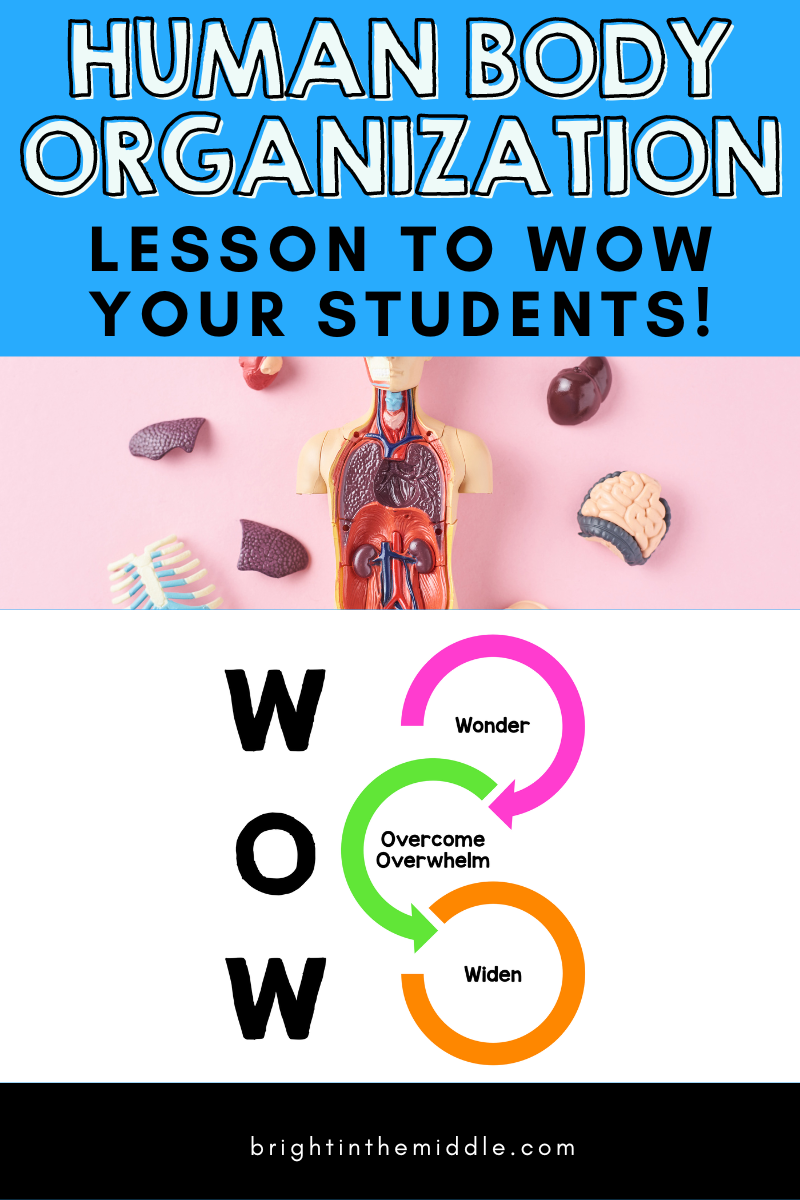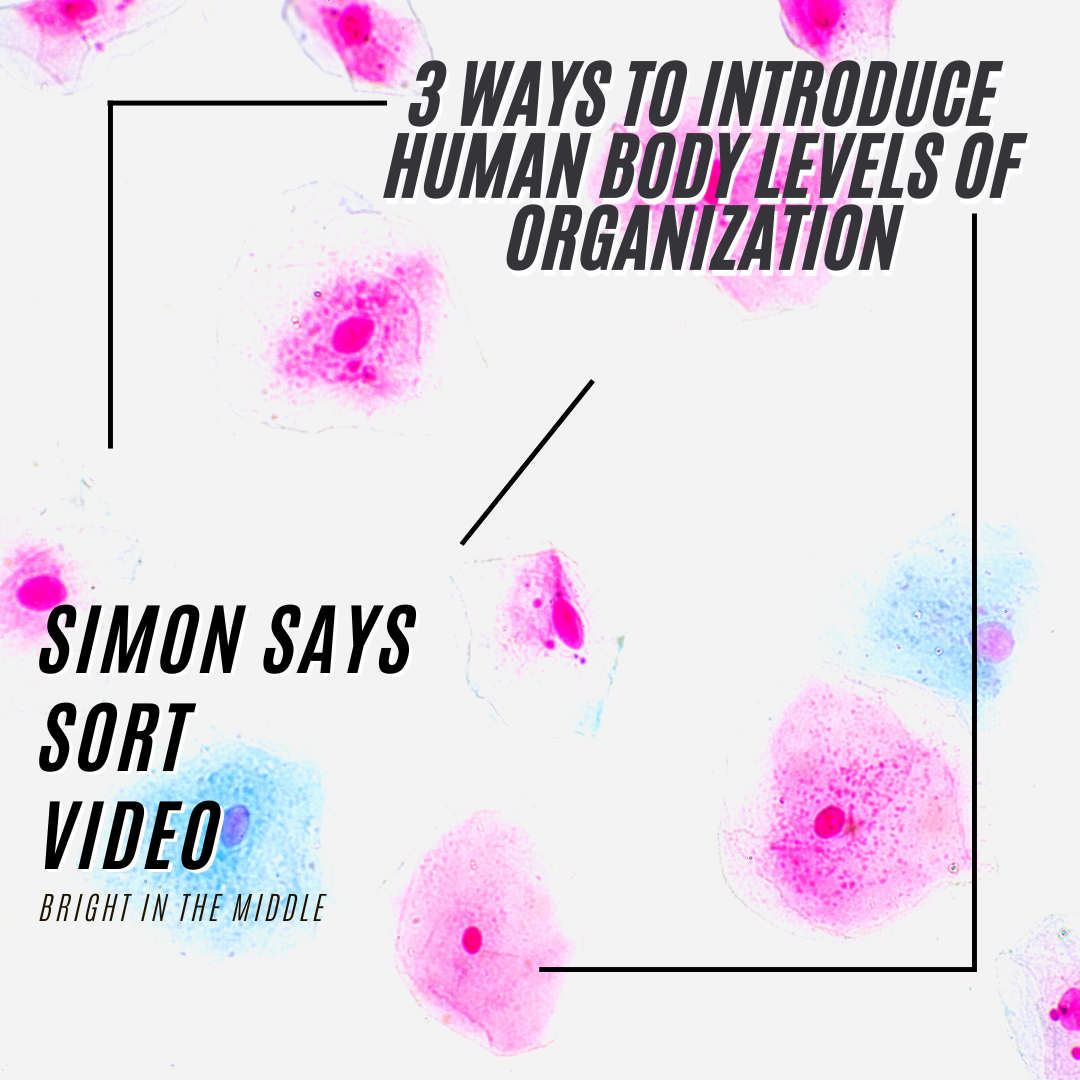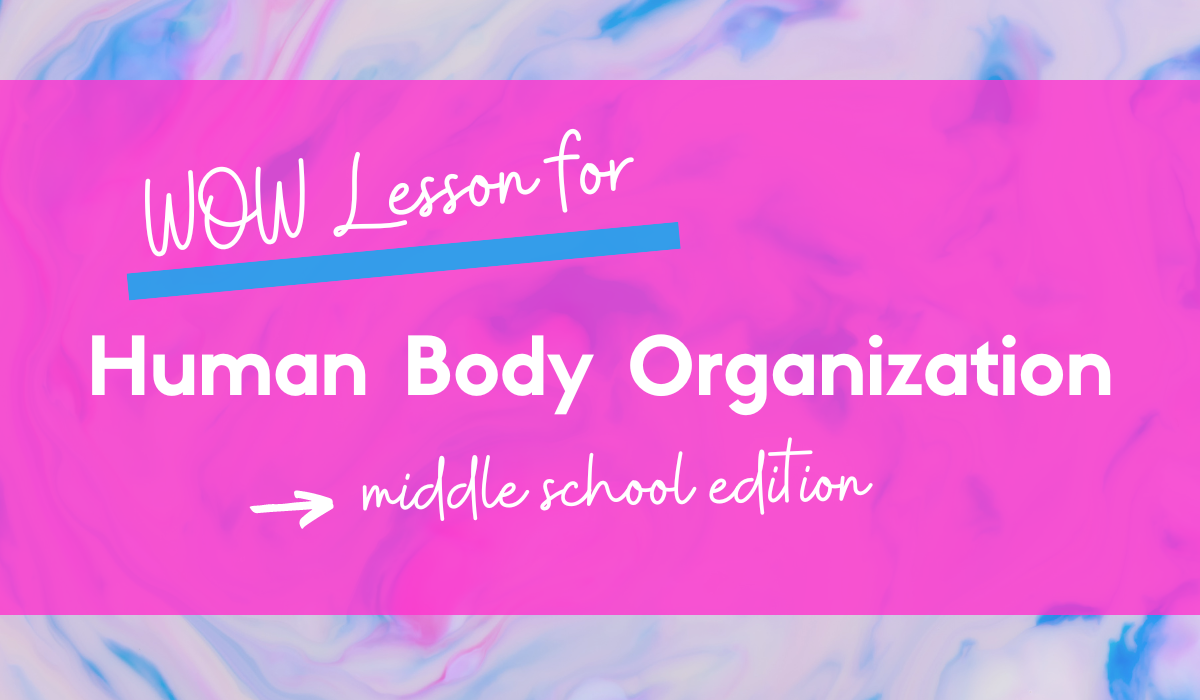You already know teaching about the human body is my all time favorite topic to teach and that includes the levels of organization of the human body. You see, to understand how the body systems work, you have to understand how all of the smallest, microscopic parts of the body are involved.
There are even microscopic organisms that are in our body that do not contain our DNA that play a huge role in how our body works, but that’s another conversation for another day!
So, how do you introduce the levels of organization in biology units in your classroom? Well, I have some ideas that I’ll share with you in this post.
First, I’ll share with you how to begin your unit and actually talk about what are levels of organization. Then, I’ll discuss how you can teach your students (in a super fun way) about the levels of organization in the human body from smallest to largest. Finally, I’ll discuss the ways to widen their knowledge on this topic and dive into levels of organization examples.
I call this the WOW factor lesson on teaching the levels of organization – human body! This is your chance to get your students to wonder, overcome the overwhelm of new information, and widen their knowledge.
[Disclaimer: This post contains Amazon affiliate links. If you make a purchase through these links, I may earn a small commission at no extra cost to you.]

Introducing the Levels of Organization from Smallest to Largest
Before teaching any new information, you have to get buy-in from your students. You may have some students that are interested in what you have to teach, but some, especially middle school students, have other plans for the day and it does not involve what you have to say. Oh, the cold hard truth about middle school.
Nevertheless, the WOW factor approach is the secret sauce the keeping your students engaged and helping them to learn and apply the information.
The first thing that you have to do is get them to WONDER. I have 3 examples of how you can do this for this topic!
How does the body work?
One of the things that you can do, and I think that it is the first thing to do, is to get students to wonder about how their body works in the first place.
So, how can you do this? How about a game of Simon Says.
It can go a little something like this:
- Simon says stand up.
- Simon says run in place.
- Stop.
- Simon says stop.
- Simon says do 10 jumping jacks.
- Simon says stand up.
- Sit down.
- Simon says jump up and down.
You can go on and on and on for as long as you’d like. The point of this game is to get their heart rate up and then, this will be the start of some great conversations about how the body works in the first place.
Here are some guiding questions:
- What happened when you played Simon Says?
- Did you start feeling tired?
- Did you start breathing harder? Why?
- Did you sweat? Why?
- Did you know that there are levels of organization in your body that come together in systems to make your body work?
You can go into as deep of a discussion as you’d like. You can see what they know and don’t know, discuss cells and cellular respiration, homeostasis, and more!
Then, you can move on to one of the next two ideas!

Structural Levels of Organization Activity
Before students learn the material, they could be given this activity. They have to decide what order they believe the body is organized in. They are trying to answer the question, “What are the levels of organization in order?”. Once they feel that they have completed it, they may tell you, and you can check it. This is a simple activity that your students can do to activate prior knowledge and get them to think.
You’ll need to create pieces of paper, index cards, or something of the sort with these terms:
- cell
- tissue
- organ
- organ system
- organism
You can also include:
- atom
- molecule
- macromolecule
- organelle
Students can work by themselves, in partners, or in groups.
Organization in the Human Body Video
If you do want to give your students a preview of the lesson, you can show them this video from Khan Academy. It dives into the content, getting students thinking about what other questions that they may have.
Teaching the Levels of Organization in the Body
Now that your students are wondering and are engaged. It’s now time to dive into more learning. I’m a huge fan of reducing student cognitive load in the classroom. Studies show that the more information that is thrown in your working memory at a time, the more overwhelm that there will be, which results in NO learning at all!
So, I strive to make lessons that overcome this overwhelm, reduce cognitive load, and make things easier for middle school students to learn.
Interactive lessons are a great way to do this. These lessons are broken down into chunks with embedded researched-based activities that allow students to process their learning as they go. In this way, they can take in one piece of information at a time before moving on.
In this particular human body organization lesson, students learn about cells, tissues, organs, organ systems, and organisms. They will learn the definition and examples of each level. In addition, they will learn the difference between unicellular and multicellular organisms and homeostasis.
In the process of learning this information, they will have embedded interactive activities including drag-and-drop, typing in the text box, a Venn diagram, KWL, four corners vocabulary, and more!
This can also be found on TPT.
Diving Deeper into Human Body Levels of Organization
Ok, so your students have learned a lot, have some notes, participated in practice. What’s next?
Well, this is an introduction to a bigger unit, the human body systems unit. So, you can choose to move on and check out these human body system teaching tips.
You can also try these activities:
Compare the Levels of Organization to a Book
Give your students a challenge. Now that they know the levels of organization, see if they can create their own analogy or you can see if they can compare the human body organization levels to a book.
They should come up with something such as this:
- cells: letters
- tissue: words
- organs: paragraphs
- organ system: chapters
- organism: the whole book
Around the Room Examples
For this activity, you’ll need 5 signs posted around the room: cells, tissues, organs, organ system, and organism.
You need a collection of cards with examples such as: red blood cell, nervous tissue, bone, lung, heart, nervous system, etc. You will need enough cards for each student to have 1-2. I mean, have students figure out the hard stuff such as exactly what levels of organization is blood?
Give each of your students 1-2 cards and say GO. Once you say go, they go to the correct location in the room. Let your students have conversations with their classmates once they are in the group to see if they are in the correct place.
Levels of Organization STEM Cup Challenge
This is your chance to incorporate STEM into your science classroom and take the Stacking Cup STEM Challenge to a whole new level.
Students can still use the yarn or string to work together to stack the cups in a pyramid, but they also have another challenge. They have to stack them in order of their levels of organization.
For example, on the bottom, you can have examples of organelles. On the top you can have a picture of an organism. This is so much fun!

Learn more about this activity in the Bright in the Middle Shop or on TPT!
Help your students master science content!



[…] Levels of Organization […]